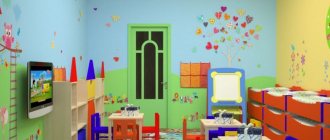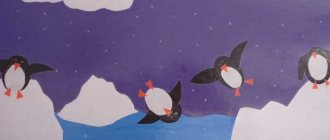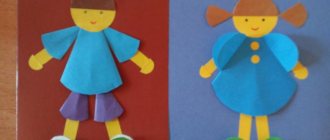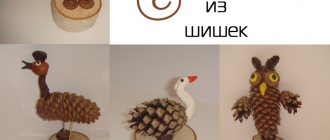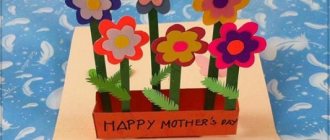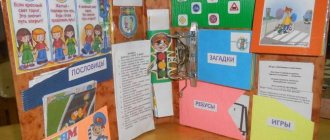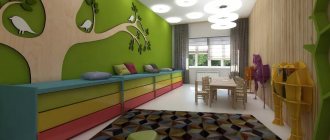Positive aspects of applications
When creating applications, the child develops fine motor skills, masters and improves coordination of movements. Working in this technique, the baby actively fantasizes, develops observation and logical thinking, it is easier for him to learn new colors and combine them with each other. With the help of this type of activity, the child learns to divide one whole into several parts, and vice versa - to create one whole from several parts.
Materials for applications
The most popular material for applique is paper. As a basis, you can take simple colored, wrapping, corrugated, foil, self-adhesive, kraft paper, and also use a variety of clippings from magazines and notebook covers.
Often the basis for such crafts is used:
- cereals and dried plant seeds (rice, sunflower seeds, peas, beans);
- dried leaves of trees and shrubs, flower petals;
- small shells, small pebbles;
- sand;
- plasticine;
- felt;
- buttons;
- cotton wool, cotton pads.
Naturally, to create an applique you will need scissors; you can use simple stationery or curly ones that will make the edges of the paper in a certain pattern. You can use shaped hole punches to create small, neat shapes (butterfly, tree leaf, heart, star). PVA glue, glue stick, and silicone glue are good for gluing.
Materials and equipment for appliqué classes……………………6
3. Application training program for senior children………………8
4. Practical part: Methods and techniques of teaching…………………….…11
Conclusion………………………………………………………………………………………..21
List of sources used……………………………………22
Introduction
Introducing a child to the world of beauty reveals to him the richness and beauty of the surrounding life, contributes to the development of the need not only to contemplate the world, but also to actively understand and transform it.
V. A. Sukhomlinsky said that a child by nature is an inquisitive researcher, a discoverer of the world, that a child’s heart is sensitive to the call to create beauty. It is only important that calls are followed by work, so that work becomes a necessity.
You will learn how great the potential is for one of the common types of fine art - appliqué - for the formation of the mental and creative abilities of a preschooler, for the development of his moral ideas, work skills, and artistic taste.
1. General characteristics of application as a type of visual activity for preschool children
Applique (from the Latin word “attachment”) is an interesting type of artistic activity - it is a way of working with colored pieces of various materials: paper, fabric, leather, fur, felt, colored beads, beads, woolen threads, embossed metal platinum, all kinds of matter (velvet , satin, silk), dried leaves... this use of various materials and structures in order to enhance expressive capabilities is very close to another means of representation - collage.
The application was born a long time ago. It appeared as a way to decorate clothes and shoes, household utensils and tools, and the interior of your home.
Perhaps the first impetus for the appearance of appliqué was the need to sew skins for clothing, and the first stitch told a person that they could not only connect the details of clothing, but also decorate it. Parts cut from these materials began to be attached to clothing. This is how the application appeared.
The subject matter included animals, birds, people themselves, fantastic monsters, beautiful flowers and plants, scenes of hunting and everyday life.
Applications are accessible even to young children: creating a whole from existing parts is much easier than creating the same design from a mosaic.
Parts of the applique can be prepared in advance and given to the child to create an image, but the mosaic cannot.
When working on the applique, they use glue, scissors, colored paper (which you can make yourself using paints or felt-tip pens), wrapping paper, magazines, foil, candy wrappers, foam rubber and simply unexpected materials.
The concept of “appliqué” includes methods of creating works of art from materials that differ in their properties and texture, united by the similarity of the execution technique. Each material has its own characteristics, which have a decisive influence on the application technique. For example, paper, straw, dried plants, birch bark are attached to the background with various adhesives; poplar fluff is placed on velvet paper.
Applique is the simplest and most accessible way to create artwork, which preserves the realistic basis of the image itself. This makes it possible to widely use applique not only for design purposes, but also in creating paintings, panels, ornaments, etc.
The main features of the appliqué are silhouette, flat generalized interpretation of the image, locality of large color spots.
The application can be substantive, consisting of individual images; plot, reflecting a set of actions and events; decorative, including ornaments and patterns that can be used to decorate various objects.
Preschoolers master all the processes of making appliqué—cutting and gluing shapes. Preparatory exercises for mastering this type of activity are games with mosaics, with the help of which children, laying out ready-made geometric shapes, become familiar with their features, color, arrangement methods, and principles of creating a pattern. Cutting out without gluing helps master the applique process (children cut paper, making tickets, flags, etc. for games, learn to use scissors). In kindergarten, they use such types of applique work as gluing ready-made shapes (decorative - from geometric and plant shapes and object - from individual parts or silhouettes) and cutting and gluing forms (individual objects, plot, decorative). Preschoolers can cut out shapes in sections or as a silhouette. Composing an object from separate parts is easier for them, like any constructive image in drawing or modeling. Silhouette cutting is more difficult for children, since they always need to compare the general contours of the object with the proportions of its individual parts. Therefore, cutting out complex shapes is included in the program only in the preparatory group. The application contains great opportunities for the development of imagination, imagination, and creative abilities of children. Thus, the pattern can be made up of both ready-made geometric and plant shapes cut out by the children themselves. The use of ready-made forms in decorative works allows preschoolers to focus all their attention on the rhythmic alternation of elements in a pattern and the selection of beautiful color combinations. Children use the skills acquired in appliqué classes in other activities, mainly in design, making shadow theater, light decorations, and Christmas tree decorations.
Simple paper applique ideas for little ones
A good idea for a child’s first job is cutting out various geometric shapes from colored paper and chaotically gluing them onto a sheet of cardboard. This is how the child can begin his acquaintance with this creativity. While working, he will slowly learn to hold scissors correctly, how to use them, and understand how to handle glue correctly. After this, it will be easier and easier for the child to make such crafts and improve them every time.
A fairly easy applique - a Christmas tree with toys.
To begin with, you should draw a Christmas tree on a colored sheet of paper or use a template. Cut it out and glue it onto a piece of cardboard. To decorate the Christmas tree, cut out circles from paper of different colors and glue them in random order onto the forest beauty. Cut out a star from red paper and glue it to the top of the tree. This simple applique can become a decoration for the New Year holidays.
Instead of a Christmas tree, you can create other trees, for example, fruit trees with fruits: apple, cherry, pear.
An interesting applique option is a caterpillar.
To create it, you need to cut out a circle with a diameter of approximately 6-8 cm - this will be the head of the caterpillar. Cut out smaller circles, but you can use different colors and a sufficient number - this will be the body of the caterpillar. First glue the head onto the cardboard, and then the parts of the body, circle by circle. Using felt-tip pens, draw: horns, eyes, nose, mouth.
Applications made of cotton wool and cotton pads
On the Internet you can find a variety of photos of crafts made from these materials, and applications are quite common. These can be works on different topics, of varying complexity and of varying volume. Children's hands enjoy working with such materials; for them it is unusual and interesting at the same time. With the help of cotton wool and cotton pads it is interesting to create a bunny, a ram, a dandelion, trees in the snow, a snowman, snowflakes, clouds...
An interesting application on a winter theme - a snowman.
To create it you need to prepare: a sheet of cardboard, cotton pads, a felt-tip pen, colored paper, glue, scissors, a pencil. You need to glue 3 cotton pads onto a sheet of cardboard in the shape of a snowman. Draw a bucket on colored paper, cut it out and glue it just above the top ball of the snowman. Using a felt-tip pen, draw eyes, nose, mouth and buttons for the snowman. The background of the fake can be supplemented with small pieces of cotton wool, so to speak, to depict a snowball.
Applications from cereals, plant seeds, pasta
Such materials can be found in every home, and no additional money is required. The child will only be happy to work with a variety of cereals, seeds, and dipped products. Often used for applications: semolina, rice, sunflower seeds, peas, beans, buckwheat, small pasta... Using these materials you can create various crafts using this technique: animals, trees, a vase with flowers, an aquarium with fish, transport...
It's easy and simple to depict a bunny using rice.
To do this, you need to draw a bunny on cardboard, you can print a template from the Internet and use it. Next, glue the grains of rice along the contour, and then fill the entire base of the animal with rice. Instead of eyes, glue small black beans or you can take a bead. Instead of a spout, glue halves of peas or buckwheat.
Plasticine applications
Almost every little craftsman loves to work with such a soft, flexible material as plasticine. With its help you can create such type of crafts as applique. The basic principle of operation is to smear plasticine over the base of the application with your finger. For the first works, it is better to choose such images that you only need to use one color of plasticine, after which you can take blanks for several colors. You can depict almost any object, the main thing is to choose one to your liking.
To get acquainted with this technique, a good applique option is chicken.
You need to draw a chicken on cardboard. Take yellow plasticine, pinch off a small piece, roll it into a ball and place it in the center of the chicken. And gently spread it into a thin layer with your finger. And thus, gradually fill the entire base of the chick. Make the eyes from small grains of black plasticine, and also make the beak from plasticine. Using a felt-tip pen, draw the paws.
Children's applications are a type of craft that captivates children of all ages. There are a lot of materials, techniques, online lessons and diagrams for this work. You just need to allocate time, stock up on materials and you can create masterpieces on various topics.
Collective applications in kindergarten - Collective application “Tree of Goodness”
Publication “Collective application “Tree...”
The “Week of Good Deeds” in our group ended with the making of the “Tree of Goodness.” Instead of leaves, there are hearts with kind words, wishes, proverbs and sayings. The children tried very hard to remember that there were as many leaves on the tree as possible. We made up stories about...
Image library "MAAM-pictures"
Group work on drawing “On the skating rink” with elements of appliqué using paper napkins and wax
For Figure Skating Day. Thinking about a new creative work, I decided to make it a collective one. The children really enjoyed how they worked together to create the newspaper “The Fairytale Land of Charles Perrault.” The theme of the new work, “At the Skating Rink,” is also not accidental. Children in the middle group know what skates are, but...
Collective application “Tree of good wishes”
Such a tree warmed the heart of everyone - children, parents, teachers. We were happy, there were more smiles in our group, and many warm words appeared. And a psychological action helped us in this - a tree of good wishes. A tree was drawn on a piece of whatman paper - a trunk and branches. Instead of…
Collective application “Winter fun” Collective application “Winter fun”. Goals: continue to introduce children to winter sports, games and winter fun; strengthening the ability to create a holistic image. Objectives: Educational: develop the ability to cut out a human figure from a sheet of paper folded in half;…

